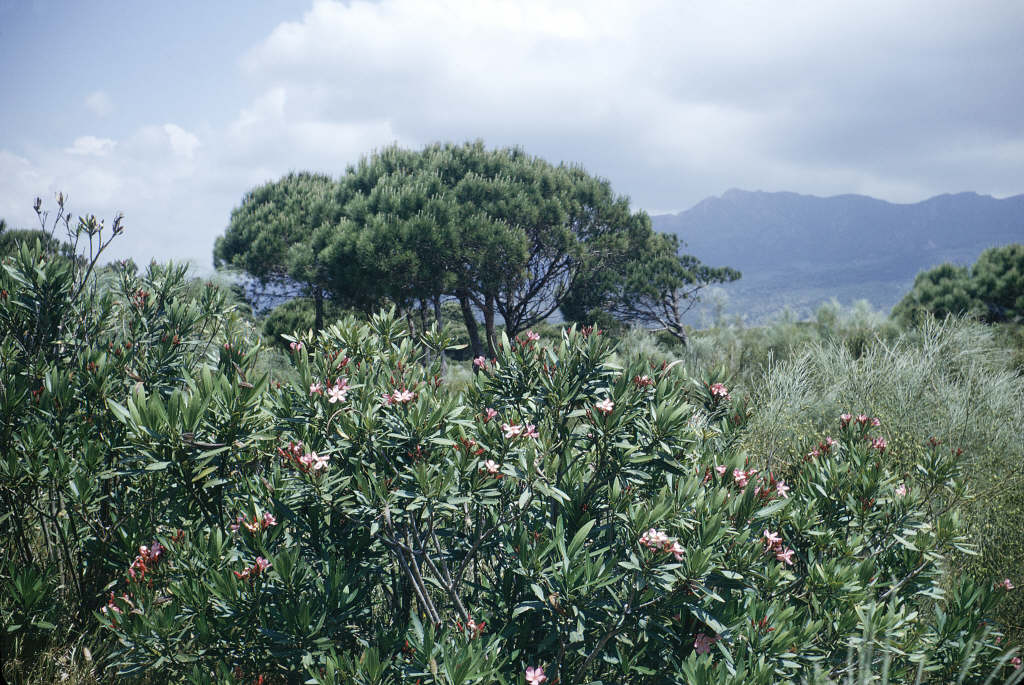Nerium oleander L.
oleander
An evergreen shrub with narrowly lance-shaped grey-green leaves and terminal clusters of salver-shaped, pink, white or red flowers 3-4cm across, in summer

Buy this plant
Size
Ultimate height
1.5–2.5 metresTime to ultimate height
10–20 yearsUltimate spread
1–1.5 metresGrowing conditions
Moisture
Moist but well–drainedpH
Acid, Alkaline, NeutralColour & scent
| Stem | Flower | Foliage | Fruit | |
| Spring | Grey Silver Green | |||
|---|---|---|---|---|
| Summer | Pink Red White | Grey Silver Green | ||
| Autumn | Grey Silver Green | |||
| Winter | Grey Silver Green |
Position
- Full sun
Aspect
South–facing
Exposure
ShelteredDrought resistance
Yes Hardiness
H3Botanical details
- Family
- Apocynaceae
- Native to GB / Ireland
- No
- Foliage
- Evergreen
- Habit
- Bushy
- Potentially harmful
- TOXIC if eaten, smoke from burning is harmful. Wear gloves and other protective equipment when handling TOXIC to pets if eaten - see the HTA guide to potentially harmful plants for further information and useful contact numbers
- Genus
Nerium are evergreen shrubs with linear or narrowly oblong leaves and terminal clusters of salver- or funnel-shaped flowers, followed by long, bean-like seed-pods
- Name status
Correct
- Plant range
- Mediterranian to W China
How to grow
Cultivation
Grow outdoors in moist but well-drained soil in full sun in sheltered frost-free conditions. Grow under glass in peat-free, loam-based compost in full light, ventilate well
Propagation
Propagate by seed, semi-hardwood cuttings or by air layering in spring
Suggested planting locations and garden types
- City and courtyard gardens
- Patio and container plants
- Cottage and informal garden
- Mediterranean climate plants
- Low Maintenance
- Hedging and screens
- Wall side borders
Pruning
Pruning group 9. May need restrictive pruning under glass in late winter. Will tolerate hard pruning
Pests
May be susceptible to scale insects, mealybugs and glasshouse red spider mite under glass
Diseases
High Risk Host for Xylella fastidiosa. May be susceptible to honey fungus (rarely)
Get involved
The Royal Horticultural Society is the UK’s leading gardening charity. We aim to enrich everyone’s life through plants, and make the UK a greener and more beautiful place.